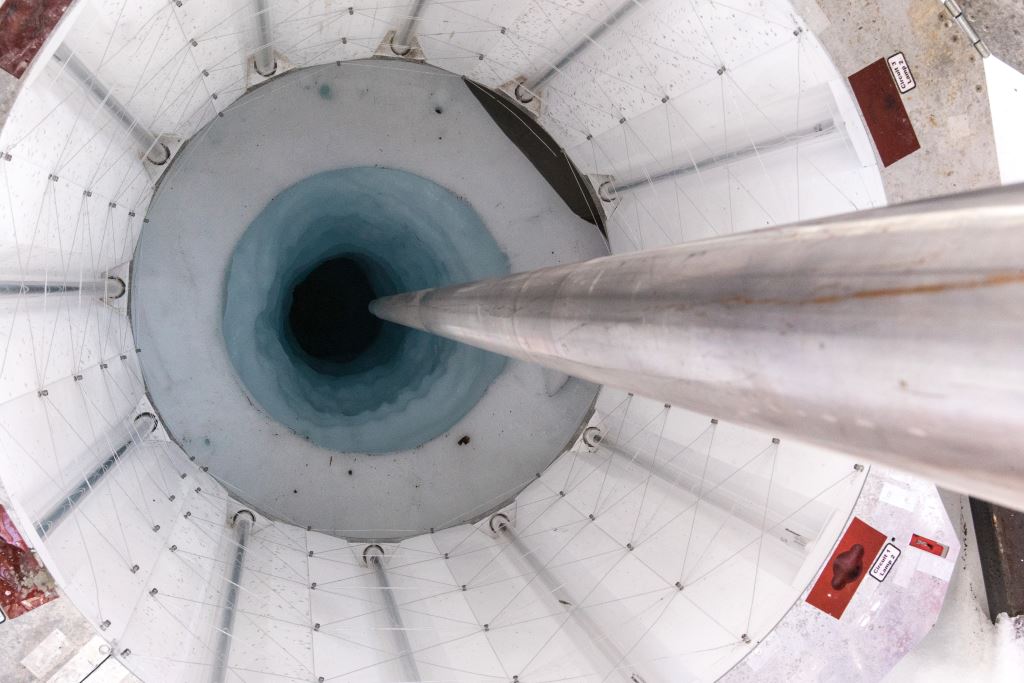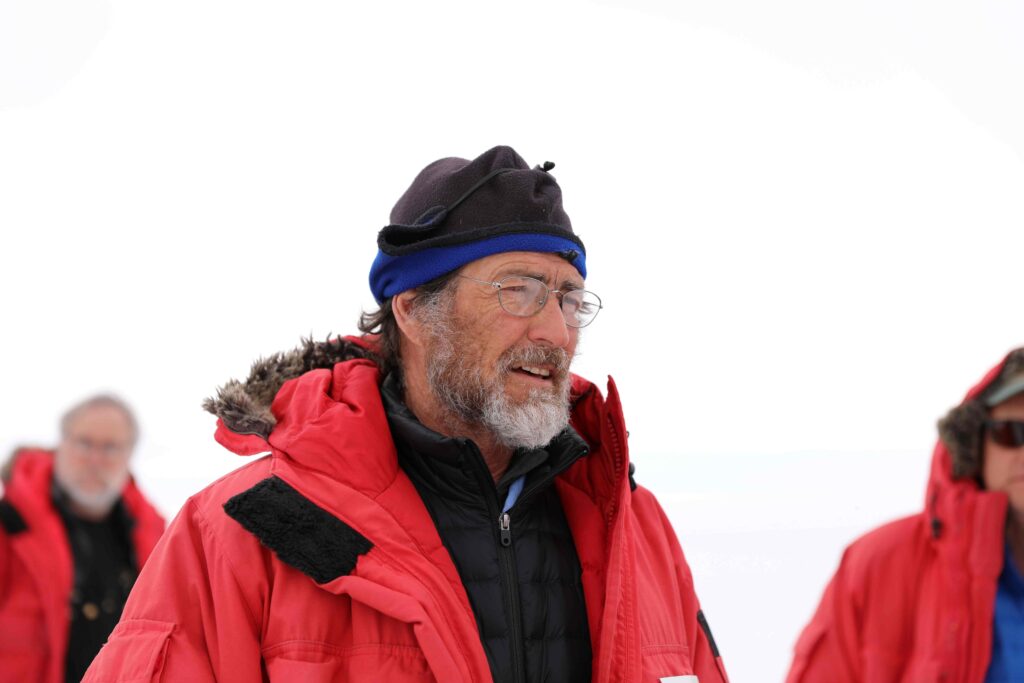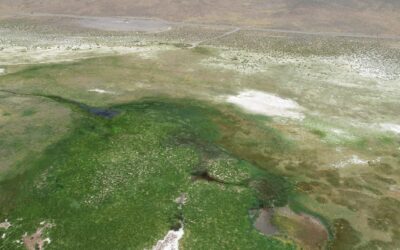DRI co-authors international research that uncovers novel microbial communities isolated for thousands of years under the West Antarctic Ice Sheet.
Hundreds of lakes exist beneath the Antarctic ice sheet, and very few have ever been explored by scientists. Now, an international research team has published their findings from an ambitious effort to drill over 1,000 meters into the ice to sample the life hidden in one known as Mercer Subglacial Lake. The project, referred to as the Subglacial Antarctic Lake Scientific Access (SALSA) project, was documented in detail for the film The Lake at the Bottom of the World.
Their research answers questions not only about what kind of life is thriving in extreme conditions on Earth, it also illuminates the possibilities for life on other icy planets. The key challenge lies in collecting samples from water that has been isolated for millennia without contaminating it with surface life. By carefully sterilizing every step of their drilling process, the researchers managed to accomplish this difficult feat. Genetic analysis of the water uncovered many new species and taxonomic groups. Their polar expedition is also shared in the shorter film, Life Below Antarctic Ice.




Read the press release from the Korea Polar Research Institute below:
Incheon, Republic of Korea (August 18, 2025) – The Korea Polar Research Institute (KOPRI) has announced the discovery of entirely new microbial communities that have survived for thousands of years in complete isolation beneath the West Antarctic Ice Sheet. The findings are the result of an international collaboration with U.S. research teams.
A hidden ecosystem beneath 1 km of ice
Mercer Subglacial Lake lies beneath 1,085 meters of ice in West Antarctica and has been sealed off from the surface for millennia. Using a clean hot-water drilling system, the research team collected pristine water and sediment samples without contamination.
Genomic analysis of 1,374 single-cell amplified genomes (SAGs) revealed that most belong to previously unknown species, genetically distinct from any organisms found in marine or surface environments.
Adaptations to extreme isolation and low energy
The study found that microbial communities varied according to oxygen concentration, encompassing strategies from heterotrophy (organic matter use) to chemoautotrophy (energy from inorganic compounds). This provides critical insights into how life adapts and evolves in extreme environments.
“Microbes in the subglacial lake have evolved to survive without sunlight, in total darkness, and with extremely limited energy sources,” said co-first author Dr. Kyuin Hwang of KOPRI. “They display a range of metabolic strategies — oxidizing either organic matter or inorganic compounds depending on oxygen availability — and this metabolic flexibility is likely the key to their survival.”

SALSA project – a milestone in Antarctic exploration
This research was carried out as part of KOPRI’s institutional program and the Subglacial Antarctic Lake Scientific Access (SALSA) project, funded by the U.S. National Science Foundation (NSF).
The SALSA team included Prof. John Priscu (Montana State University / Desert Research Institute, Chief Scientist), Prof. Brent Christner (University of Florida), and Dr. Ok-Sun Kim (KOPRI, Co-PI), and Christina L. Davis (University of Florida; research scientist).
The Mercer Subglacial Lake expedition marks only the second time in human history that scientists have successfully accessed a subglacial lake without contamination — the first being Whillans Subglacial Lake in 2013. To date, the United States remains the only nation to have achieved this feat.
Implications beyond Earth
Beyond understanding life under Antarctic ice, the findings may also inform the search for life on icy extraterrestrial bodies, such as Europa (a moon of Jupiter) and Enceladus (a moon of Saturn), which are thought to harbor liquid water oceans beneath their frozen crusts.
“This is the world’s first successful single-cell genomic analysis from a subglacial lake, revealing microbial adaptation and evolution in darkness, low-nutrient, and high-pressure environments,” said President Hyung Chul Shin of KOPRI. “Of more than 600 known Antarctic subglacial lakes, only two have yielded samples, making this a landmark achievement in polar science. We will continue to lead global efforts to explore and understand Earth’s least-known ecosystems.”
Publication details
The study, titled “Genetic isolation and metabolic complexity of an Antarctic subglacial microbiome”, was published in Nature Communications on August 18, 2025.


